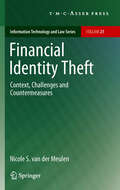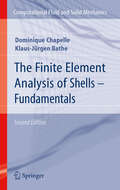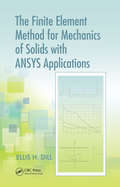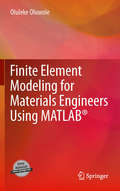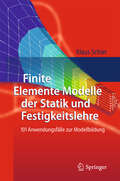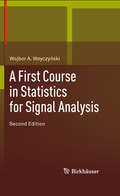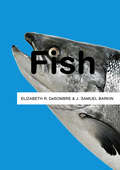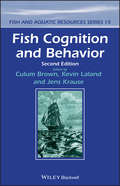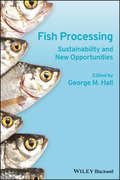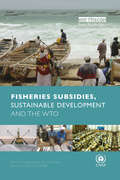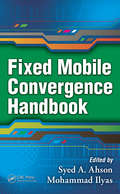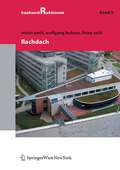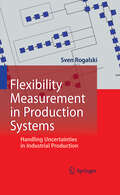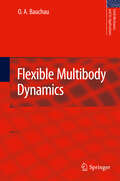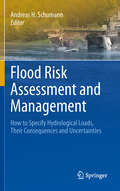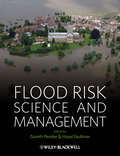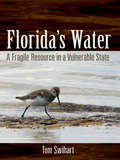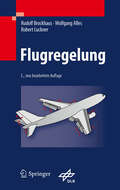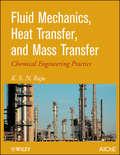- Table View
- List View
Financial Identity Theft: Context, Challenges and Countermeasures (Information Technology and Law Series #21)
by Nicole S. van der MeulenThe existence of financial identity theft in the United States, and its (gradual) spread to other areas of the world, increases the need to understand how identity theft occurs and how perpetrators of the crime manage to take advantage of developments within contemporary society. This book aims to provide such an understanding through an in-depth comparative analysis which illustrates how states, financial service providers, consumers, and others facilitate the occurrence of financial identity theft in the United States and the Netherlands.
The Finite Element Analysis of Shells - Fundamentals (Computational Fluid and Solid Mechanics)
by Dominique Chapelle Klaus-Jurgen BatheThis book presents a modern continuum mechanics and mathematical framework to study shell physical behaviors, and to formulate and evaluate finite element procedures. With a view towards the synergy that results from physical and mathematical understanding, the book focuses on the fundamentals of shell theories, their mathematical bases and finite element discretizations. The complexity of the physical behaviors of shells is analysed, and the difficulties to obtain uniformly optimal finite element procedures are identified and studied. Some modern finite element methods are presented for linear and nonlinear analyses. In this Second Edition the authors give new developments in the field and - to make the book more complete - more explanations throughout the text, an enlarged section on general variational formulations and new sections on 3D-shell models, dynamic analyses, and triangular elements. The analysis of shells represents one of the most challenging fields in all of mechanics, and encompasses various fundamental and generally applicable components. Specifically, the material presented in this book regarding geometric descriptions, tensors and mixed variational formulations is fundamental and widely applicable also in other areas of mechanics.
The Finite Element Method for Mechanics of Solids with ANSYS Applications (Advances In Engineering Ser.)
by Ellis H. DillWhile the finite element method (FEM) has become the standard technique used to solve static and dynamic problems associated with structures and machines, ANSYS software has developed into the engineer's software of choice to model and numerically solve those problems. An invaluable tool to help engineers master and optimize analysis, The Finite El
Finite Element Modeling for Materials Engineers Using MATLAB®
by Oluleke OluwoleThe finite element method is often used for numerical computation in the applied sciences. It makes a major contribution to the range of numerical methods used in the simulation of systems and irregular domains, and its importance today has made it an important subject of study for all engineering students. While treatments of the method itself can be found in many traditional finite element books, Finite Element Modeling for Materials Engineers Using MATLAB® combines the finite element method with MATLAB to offer materials engineers a fast and code-free way of modeling for many materials processes. Finite Element Modeling for Materials Engineers Using MATLAB® covers such topics as:developing a weak formulation as a prelude to obtaining the finite element equation,interpolation functions,derivation of elemental equations, anduse of the Partial Differential Equation Toolbox™.Exercises are given based on each example and m-files based on the examples are freely available to readers online.Researchers, advanced undergraduate and postgraduate students, and practitioners in the fields of materials and metallurgy will find Finite Element Modeling for Materials Engineers Using MATLAB® a useful guide to using MATLAB for engineering analysis and decision-making.
Finite Elemente Modelle der Statik und Festigkeitslehre: 101 Anwendungsfälle zur Modellbildung
by Klaus SchierUm die Finite Elemente Methode (FEM) bei anspruchsvollen Aufgaben anwenden zu können, werden Softwaresysteme benötigt. Die Modellbildung rückt damit in den Mittelpunkt der Problemlösung. Der Band vermittelt nach einer kurzen Einführung in die FE-Methode die Abläufe der Modellbildung in allgemeiner Form, das heißt, unabhängig von bestimmten FEM-Programmen. Im Zentrum stehen die Modellbildung an Tragwerken, an Bauteilen bei unterschiedlichen Beanspruchungsarten, die Anwendung verschiedener Elementtypen sowie die Verifizierung der FE-Ergebnisse.
A First Course in Statistics for Signal Analysis
by Wojbor A. WoyczynskiThis self-contained and user-friendly textbook is designed for a first, one-semester course in statistical signal analysis for a broad audience of students in engineering and the physical sciences. The emphasis throughout is on fundamental concepts and relationships in the statistical theory of stationary random signals, which are explained in a concise, yet rigorous presentation. With abundant practice exercises and thorough explanations, A First Course in Statistics for Signal Analysis is an excellent tool for both teaching students and training laboratory scientists and engineers. Improvements in the second edition include considerably expanded sections, enhanced precision, and more illustrative figures.
Fish: Reducing Fishing Capacity To Promote Sustainability (Resources #6)
by Elizabeth R. DeSombre J. Samuel BarkinFishing has played a vital role in human history and culture. But today this key resource faces a serious crisis as most species are being overfished or fished to their very limit. Governments have tried to tackle the problem with limited success. Many of their actions have been counterproductive or ineffective. What will happen to global fisheries, and the populations that depend on them, as we continue to catch more fish than the oceans can reproduce? This book explores the causes of the current crisis in the world's fisheries, and what needs to be done to address the situation. It explains the structure of the fishing industry, the incentives that persuade individuals or companies to catch fish at unsustainable levels, and illuminates the problems created by governmental efforts to use fishing policy as a tool for economic development or to win votes in domestic elections. It also looks at the role of aquaculture in either decreasing or increasing the pressure on wild fish stocks. The dire condition of fish stocks has led governments and consumer organizations to consider new approaches to protect the global supply of fish. DeSombre and Barkin conclude by showing how such methods, along with new forms of international regulation and informed decision-making by consumers, all have an important part to play in rewarding and thus encouraging sustainable fishing behaviour in the future.
Fish Cognition and Behavior (Fish and Aquatic Resources #21)
by Culum Brown Kevin Laland Jens KrauseIn the second edition of this fascinating book an international team of experts have been brought together to explore all major areas of fish learning, including: Foraging skills Predator recognition Social organisation and learning Welfare and pain Three new chapters covering fish personality, lateralisation, and fish cognition and fish welfare, have been added to this fully revised and expanded second edition. Fish Cognition and Behavior, Second Edition contains essential information for all fish biologists and animal behaviorists and contains much new information of commercial importance for fisheries managers and aquaculture personnel. Libraries in all universities and research establishments where biological sciences, fisheries and aquaculture are studied and taught will find it an important addition to their shelves.
Fish Cognition and Behavior (Fish and Aquatic Resources #20)
by Culum Brown Kevin Laland Jens KrauseIn the second edition of this fascinating book an international team of experts have been brought together to explore all major areas of fish learning, including: Foraging skills Predator recognition Social organisation and learning Welfare and pain Three new chapters covering fish personality, lateralisation, and fish cognition and fish welfare, have been added to this fully revised and expanded second edition. Fish Cognition and Behavior, Second Edition contains essential information for all fish biologists and animal behaviorists and contains much new information of commercial importance for fisheries managers and aquaculture personnel. Libraries in all universities and research establishments where biological sciences, fisheries and aquaculture are studied and taught will find it an important addition to their shelves.
Fish Processing: Sustainability and New Opportunities
by George M. HallThis book seeks to address the challenges facing the international seafood industry via a two pronged approach: by offering the latest information on established technologies and introducing new ideas and technologies. An introductory chapter sets the tone for the book by presenting the background against which fish processing will exist in the near future. Chapter two looks at the environmental and sustainability issues relating to conventional fish processing, including processing efficiency and better use of the outputs currently considered wastes. The impact of mechanisation and computerisation on environmental sustainability is also addressed. Subsequent chapters examine the latest developments in established fish processing technologies such as canning, curing, freezing and chilling, with an emphasis on the environmental aspects of packaging and the process itself. In addition, quality and processing parameters for specific species, including new species, are described. The second part of the book gives authors the opportunity to introduce the potential technologies and applications of the future to a wider audience. These include fermented products and their acceptance by a wider audience; the utilisation of fish processing by-products as aquaculture feeds; and the use of by-products for bioactive compounds in biomedical, nutraceutical, cosmetic and other applications.
Fisheries Subsidies, Sustainable Development and the WTO
by Anja Von MoltkeThe fisheries sector is in crisis. Inappropriate subsidies to the fishing industry are a key factor responsible for worldwide fisheries depletion, overcapitalization and ecosystem degradation. There is an urgent need for an international mechanism to promote the appropriate restructuring of fisheries subsidies in order to create a more sustainable industry. In recent years the leading international forum charged with providing such a mechanism has been the World Trade Organization (WTO). This book explains why and how the reform of fisheries subsidies has become one of the most concrete and potentially successful international efforts to achieve global environmental, economic and developmental policy coherence. It describes the history and current status of the discussions at the WTO, drawing on UNEP's key documents and reflecting on the major issues. Accompanying the book is a CD-Rom containing full-text versions of the most important source material used in the publication. The book is aimed at a broad stakeholder audience, including policymakers in the fields of trade, fisheries, environmental economics and international environmental governance, as well as academics and others looking for an overview of the fisheries subsidies issue and an introduction to its technical components. Published with the United Nations Environment Programme (UNEP)
Fisheries Subsidies, Sustainable Development and the WTO
by Anja Von MoltkeThe fisheries sector is in crisis. Inappropriate subsidies to the fishing industry are a key factor responsible for worldwide fisheries depletion, overcapitalization and ecosystem degradation. There is an urgent need for an international mechanism to promote the appropriate restructuring of fisheries subsidies in order to create a more sustainable industry. In recent years the leading international forum charged with providing such a mechanism has been the World Trade Organization (WTO). This book explains why and how the reform of fisheries subsidies has become one of the most concrete and potentially successful international efforts to achieve global environmental, economic and developmental policy coherence. It describes the history and current status of the discussions at the WTO, drawing on UNEP's key documents and reflecting on the major issues. Accompanying the book is a CD-Rom containing full-text versions of the most important source material used in the publication. The book is aimed at a broad stakeholder audience, including policymakers in the fields of trade, fisheries, environmental economics and international environmental governance, as well as academics and others looking for an overview of the fisheries subsidies issue and an introduction to its technical components. Published with the United Nations Environment Programme (UNEP)
Fixed Mobile Convergence Handbook
by Syed A. Ahson Mohammad IlyasRequirements for next generation networks (NGNs) are fueling an architectural evolution. Service providers are obliged to give users access to content anytime, anyhow, anywhere, on any device. This requires a converged infrastructure in which users across multiple domains can be served through a single unified domain and all network services and business units can be consolidated on a single IP infrastructure. The Fixed Mobile Convergence Handbook is a comprehensive guide to the design, implementation, and management of converged cellular/WiFi wireless networks. This book discusses how FMC is transforming technologies as multimedia ceases to be passively consumed and unidirectional—and becomes increasingly mobile, personalized and interactive. This book also describes ways to ensure that networks remain cost-effective, scalable, reliable, and secure in the face of constant technological evolution. This material encapsulates the state of FMC, covering everything from basic concepts to research-grade material and future directions. Addressing a broad range of topics, the handbook consists of 16 chapters authored by 44 experts from around the world. Subjects include: Femtocell network technology and applications Deployment modes and interference avoidance Architecture for power efficiency Conversational quality and network planning Design of SIP-based mobility management protocols Highly respected in their field, the authors anticipate the key issues and problems that FMC presents—from application inception and deployment to system interconnection and Quality of Service (QoS). Ideal for professional mobile technology designers and/or planners, researchers (faculty members and graduate students), this book provides specific salient features and information that will guide innovation in the 21st century and beyond. Syed Ahson is a senior software design engineer with Microsoft. Previously, he was a senior staff software engineer with Motorola, where he was a leading contributor in the creation of several iDEN, CDMA, and GSM cellular phones. Dr. Mohammad Ilyas is associate dean for research and industry relations at the College of Engineering and Computer Science at Florida Atlantic University, Boca Raton. A consultant to several national and international organizations, Dr. Ilyas is a member of both the IEEE and ASEE.
Fixed Mobile Convergence Handbook
by Syed A. Ahson and Mohammad IlyasRequirements for next generation networks (NGNs) are fueling an architectural evolution. Service providers are obliged to give users access to content anytime, anyhow, anywhere, on any device. This requires a converged infrastructure in which users across multiple domains can be served through a single unified domain and all network services and business units can be consolidated on a single IP infrastructure. The Fixed Mobile Convergence Handbook is a comprehensive guide to the design, implementation, and management of converged cellular/WiFi wireless networks. This book discusses how FMC is transforming technologies as multimedia ceases to be passively consumed and unidirectional—and becomes increasingly mobile, personalized and interactive. This book also describes ways to ensure that networks remain cost-effective, scalable, reliable, and secure in the face of constant technological evolution. This material encapsulates the state of FMC, covering everything from basic concepts to research-grade material and future directions. Addressing a broad range of topics, the handbook consists of 16 chapters authored by 44 experts from around the world. Subjects include: Femtocell network technology and applications Deployment modes and interference avoidance Architecture for power efficiency Conversational quality and network planning Design of SIP-based mobility management protocols Highly respected in their field, the authors anticipate the key issues and problems that FMC presents—from application inception and deployment to system interconnection and Quality of Service (QoS). Ideal for professional mobile technology designers and/or planners, researchers (faculty members and graduate students), this book provides specific salient features and information that will guide innovation in the 21st century and beyond. Syed Ahson is a senior software design engineer with Microsoft. Previously, he was a senior staff software engineer with Motorola, where he was a leading contributor in the creation of several iDEN, CDMA, and GSM cellular phones. Dr. Mohammad Ilyas is associate dean for research and industry relations at the College of Engineering and Computer Science at Florida Atlantic University, Boca Raton. A consultant to several national and international organizations, Dr. Ilyas is a member of both the IEEE and ASEE.
Flachdach (Baukonstruktionen #9)
by Anton Pech Wolfgang Hubner Franz ZachDas Flachdach als großflächiger Bauteil ist den höchsten Belastungen amGesamtbauwerk ausgesetzt. Speziell im Hinblick auf die künftigen Auswirkungen des Klimawandels muss die Planung und Ausführung von Flachdächern schon heute abgestimmt werden. Der vorliegende Band gibt daher – ausgehend von der Behandlung der Grundkonstruktionen – eine ausführliche und fundierte Darstellung dieses Fachgebietes, wobei den immer aktueller werdenden begrünten Dächern ein eigener Abschnitt gewidmet ist. Besonderes Augenmerk ist bei Flachdächern auchder Ausbildung von Durchdringungen und Anschlüssen zu widmen.
Flexibility Measurement in Production Systems: Handling Uncertainties in Industrial Production
by Sven RogalskiThe requirements for production systems are constantly changing as a result of changing competitive conditions. This poses a challenge for manufacturers in the various branches of industry and creates an ever-increasing need for flexibility.With this as a background, this book explores the current developments and trends as well as their impact on today’s production systems. It also compares known strategies, concepts and methods used to achieve production flexibility. Similarly, the practical knowledge and current research will be drawn upon and subjected to a sound scientific analysis, through which the technical and organizational flexibility ranges can be measured in their application in a production system. The convenience and usefulness of this concept for manufacturers is substantiated by its implementation in a software tool called ecoFLEX and its practical application, based on extensive examples. This illustrates how flexibility flaws can be quickly identified, classified and properly disposed of using ecoFLEX. This tool helps to close the gap between ERP / PPS systems and digital factory planning tools.
Flexible Multibody Dynamics (Solid Mechanics and Its Applications #176)
by O. A. BauchauThe author developed this text over many years, teaching graduate courses in advanced dynamics and flexible multibody dynamics at the Daniel Guggenheim School of Aerospace Engineering of the Georgia Institute of Technology. The book presents a unified treatment of rigid body dynamics, analytical dynamics, constrained dynamics, and flexible multibody dynamics. A comprehensive review of numerical tools used to enforce both holonomic and nonholonomic constraints is presented. Advanced topics such as Maggi’s, index-1, null space, and Udwadia and Kalaba’s formulations are presented because of their fundamental importance in multibody dynamics. Methodologies for the parameterization of rotation and motion are discussed and contrasted. Geometrically exact beams and shells formulations, which have become the standard in flexible multibody dynamics, are presented and numerical aspects of their finite element implementation detailed. Methodologies for the direct solution of the index-3 differential-algebraic equations characteristic of constrained multibody systems are presented. It is shown that with the help of proper scaling procedures, such equations are not more difficult to integrate than ordinary differential equations. This book is illustrated with numerous examples and should prove valuable to both students and researchers in the fields of rigid and flexible multibody dynamics.
Flood Risk Assessment and Management: How to Specify Hydrological Loads, Their Consequences and Uncertainties
by Andreas H. SchumannFlood catastrophes which happened world-wide have shown that it is not sufficient to characterize the hazard caused by the natural phenomenon "flood" with the well-known 3M-approach (measuring, mapping and modelling). Due to the recent shift in paradigms from a safety oriented approach to risk based planning it became necessary to consider the harmful impacts of hazards. The planning tasks changed from attempts to minimise hazards towards interventions to reduce exposure or susceptibility and nowadays to enhance the capacities to increase resilience. Scientific interest shifts more and more towards interdisciplinary approaches, which are needed to avoid disaster. This book deals with many aspects of flood risk management in a comprehensive way. As risks depend on hazard and vulnerabilities, not only geophysical tools for flood forecasting and planning are presented, but also socio-economic problems of flood management are discussed. Starting with precipitation and meteorological tools to its forecasting, hydrological models are described in their applications for operational flood forecasts, considering model uncertainties and their interactions with hydraulic and groundwater models. With regard to flood risk planning, regionalization aspects and the options to utilize historic floods are discussed. New hydrological tools for flood risk assessments for dams and reservoirs are presented. Problems and options to quantify socio-economic risks and how to consider them in multi-criteria assessments of flood risk planning are discussed. This book contributes to the contemporary efforts to reduce flood risk at the European scale. Using many real-world examples, it is useful for scientists and practitioners at different levels and with different interests.
Flood Risk Science and Management
by Gareth Pender Hazel FaulknerApproaches to avoid loss of life and limit disruption and damage from flooding have changed significantly in recent years. Worldwide, there has been a move from a strategy of flood defence to one of flood risk management. Flood risk management includes flood prevention using hard defences, where appropriate, but also requires that society learns to live with floods and that stakeholders living in flood prone areas develop coping strategies to increase their resilience to flood impacts when these occur. This change in approach represents a paradigm shift which stems from the realisation that continuing to strengthen and extend conventional flood defences is unsustainable economically, environmentally, and in terms of social equity. Flood risk management recognises that a sustainable approach must rest on integrated measures that reduce not only the probability of flooding, but also the consequences. This is essential as increases in the probability of inundation are inevitable in many areas of the world due to climate change, while socio-economic development will lead to spiralling increases in the consequences of flooding unless land use in floodplains is carefully planned. Flood Risk Science and Management provides an extensive and comprehensive synthesis of current research in flood management; providing a multi-disciplinary reference text covering a wide range of flood management topics. Its targeted readership is the international research community (from research students through to senior staff) and flood management professionals, such as engineers, planners, government officials and those with flood management responsibility in the public sector. By using the concept of case study chapters, international coverage is given to the topic, ensuring a world-wide relevance.
Flood Risk Science and Management
by Gareth Pender Hazel FaulknerApproaches to avoid loss of life and limit disruption and damage from flooding have changed significantly in recent years. Worldwide, there has been a move from a strategy of flood defence to one of flood risk management. Flood risk management includes flood prevention using hard defences, where appropriate, but also requires that society learns to live with floods and that stakeholders living in flood prone areas develop coping strategies to increase their resilience to flood impacts when these occur. This change in approach represents a paradigm shift which stems from the realisation that continuing to strengthen and extend conventional flood defences is unsustainable economically, environmentally, and in terms of social equity. Flood risk management recognises that a sustainable approach must rest on integrated measures that reduce not only the probability of flooding, but also the consequences. This is essential as increases in the probability of inundation are inevitable in many areas of the world due to climate change, while socio-economic development will lead to spiralling increases in the consequences of flooding unless land use in floodplains is carefully planned. Flood Risk Science and Management provides an extensive and comprehensive synthesis of current research in flood management; providing a multi-disciplinary reference text covering a wide range of flood management topics. Its targeted readership is the international research community (from research students through to senior staff) and flood management professionals, such as engineers, planners, government officials and those with flood management responsibility in the public sector. By using the concept of case study chapters, international coverage is given to the topic, ensuring a world-wide relevance.
Florida's Water: A Fragile Resource in a Vulnerable State
by Tom SwihartFlorida's Water poses fundamental questions about water sustainability in the United States' fourth largest state. Florida has long-standing water quality problems. Global climate change threatens to intensify Florida's floods and droughts, make hurricanes more common or more damaging, and eventually submerge much of low-lying Florida, including the Everglades. How can Florida meet these extraordinary challenges? And what lessons does the Florida experience hold for other states? This book fully integrates the many diverse responsibilities of water management into a readable and compelling combination of interesting narratives and deep analysis. Author Tom Swihart's unique, intimate knowledge of Florida's successes and failures in water management brings out both the novelty of Florida's water situation and the features that it has in common with other states.
Florida's Water: A Fragile Resource in a Vulnerable State
by Tom SwihartFlorida's Water poses fundamental questions about water sustainability in the United States' fourth largest state. Florida has long-standing water quality problems. Global climate change threatens to intensify Florida's floods and droughts, make hurricanes more common or more damaging, and eventually submerge much of low-lying Florida, including the Everglades. How can Florida meet these extraordinary challenges? And what lessons does the Florida experience hold for other states? This book fully integrates the many diverse responsibilities of water management into a readable and compelling combination of interesting narratives and deep analysis. Author Tom Swihart's unique, intimate knowledge of Florida's successes and failures in water management brings out both the novelty of Florida's water situation and the features that it has in common with other states.
Flugregelung
by Rudolf Brockhaus Wolfgang Alles Robert LucknerDas Buch liefert die Grundlagen für den Vorentwurf von Flugregelungssystemen. Der systematische Aufbau führt Leser von einfachen Strukturen für Dämpfer, Autostabilisatoren und Lageregler hin zu komplexen Gesamtsystemen (Automatic Flight Control System).
Fluid Mechanics, Heat Transfer, and Mass Transfer: Chemical Engineering Practice
by K. S. RajuThis broad-based book covers the three major areas of Chemical Engineering. Most of the books in the market involve one of the individual areas, namely, Fluid Mechanics, Heat Transfer or Mass Transfer, rather than all the three. This book presents this material in a single source. This avoids the user having to refer to a number of books to obtain information. Most published books covering all the three areas in a single source emphasize theory rather than practical issues. This book is written with emphasis on practice with brief theoretical concepts in the form of questions and answers, not adopting stereo-typed question-answer approach practiced in certain books in the market, bridging the two areas of theory and practice with respect to the core areas of chemical engineering. Most parts of the book are easily understandable by those who are not experts in the field. Fluid Mechanics chapters include basics on non-Newtonian systems which, for instance find importance in polymer and food processing, flow through piping, flow measurement, pumps, mixing technology and fluidization and two phase flow. For example it covers types of pumps and valves, membranes and areas of their use, different equipment commonly used in chemical industry and their merits and drawbacks. Heat Transfer chapters cover the basics involved in conduction, convection and radiation, with emphasis on insulation, heat exchangers, evaporators, condensers, reboilers and fired heaters. Design methods, performance, operational issues and maintenance problems are highlighted. Topics such as heat pipes, heat pumps, heat tracing, steam traps, refrigeration, cooling of electronic devices, NOx control find place in the book. Mass transfer chapters cover basics such as diffusion, theories, analogies, mass transfer coefficients and mass transfer with chemical reaction, equipment such as tray and packed columns, column internals including structural packings, design, operational and installation issues, drums and separators are discussed in good detail. Absorption, distillation, extraction and leaching with applications and design methods, including emerging practices involving Divided Wall and Petluk column arrangements, multicomponent separations, supercritical solvent extraction find place in the book.
Fluid Mechanics, Heat Transfer, and Mass Transfer: Chemical Engineering Practice
by K. S. RajuThis broad-based book covers the three major areas of Chemical Engineering. Most of the books in the market involve one of the individual areas, namely, Fluid Mechanics, Heat Transfer or Mass Transfer, rather than all the three. This book presents this material in a single source. This avoids the user having to refer to a number of books to obtain information. Most published books covering all the three areas in a single source emphasize theory rather than practical issues. This book is written with emphasis on practice with brief theoretical concepts in the form of questions and answers, not adopting stereo-typed question-answer approach practiced in certain books in the market, bridging the two areas of theory and practice with respect to the core areas of chemical engineering. Most parts of the book are easily understandable by those who are not experts in the field. Fluid Mechanics chapters include basics on non-Newtonian systems which, for instance find importance in polymer and food processing, flow through piping, flow measurement, pumps, mixing technology and fluidization and two phase flow. For example it covers types of pumps and valves, membranes and areas of their use, different equipment commonly used in chemical industry and their merits and drawbacks. Heat Transfer chapters cover the basics involved in conduction, convection and radiation, with emphasis on insulation, heat exchangers, evaporators, condensers, reboilers and fired heaters. Design methods, performance, operational issues and maintenance problems are highlighted. Topics such as heat pipes, heat pumps, heat tracing, steam traps, refrigeration, cooling of electronic devices, NOx control find place in the book. Mass transfer chapters cover basics such as diffusion, theories, analogies, mass transfer coefficients and mass transfer with chemical reaction, equipment such as tray and packed columns, column internals including structural packings, design, operational and installation issues, drums and separators are discussed in good detail. Absorption, distillation, extraction and leaching with applications and design methods, including emerging practices involving Divided Wall and Petluk column arrangements, multicomponent separations, supercritical solvent extraction find place in the book.
